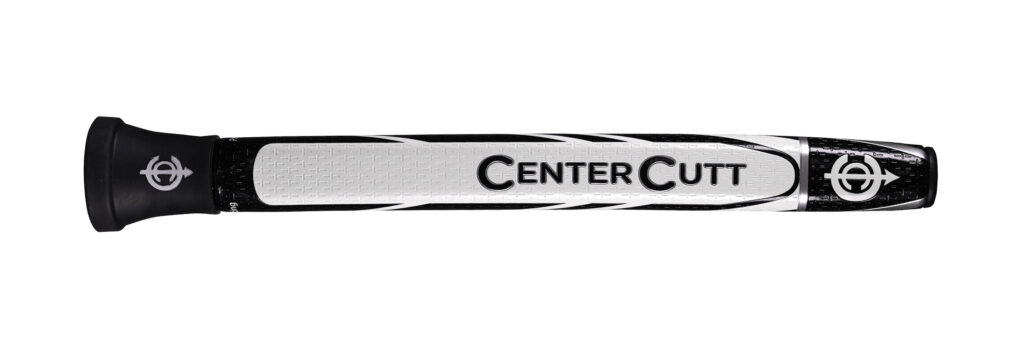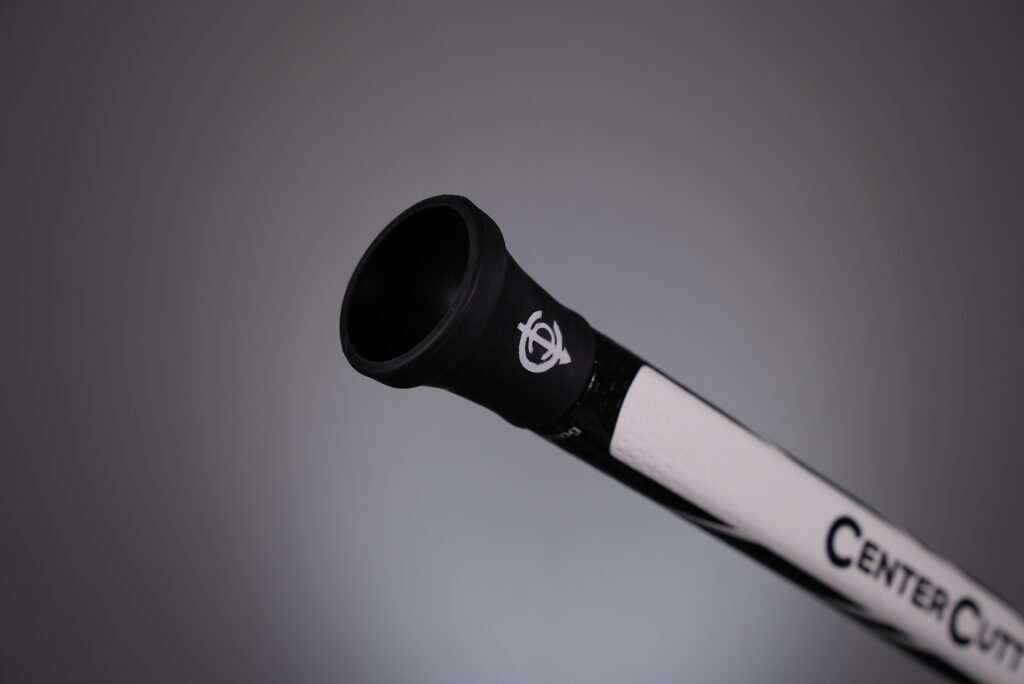In the world of golf, every aspect contributes to a player’s success on the course. From swing mechanics to mental fortitude, golfers are constantly seeking ways to improve their game. Amidst the various components that impact performance, one often-overlooked element stands out—the putter grip. Often dismissed as a mere accessory, the putter grip holds immense importance in cultivating a golfer’s connection to the putter. Understanding its significance can revolutionize your golfing experience and elevate your performance on the greens. During the 2024 PGA Show, we discovered the Center Cutt putting grip, which is an excellent product for senior golfers.
The Best Unique Putting Grip For Senior Golfers
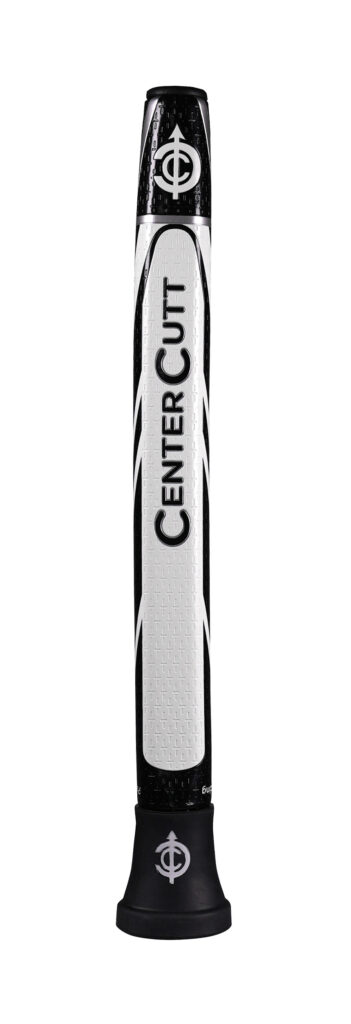
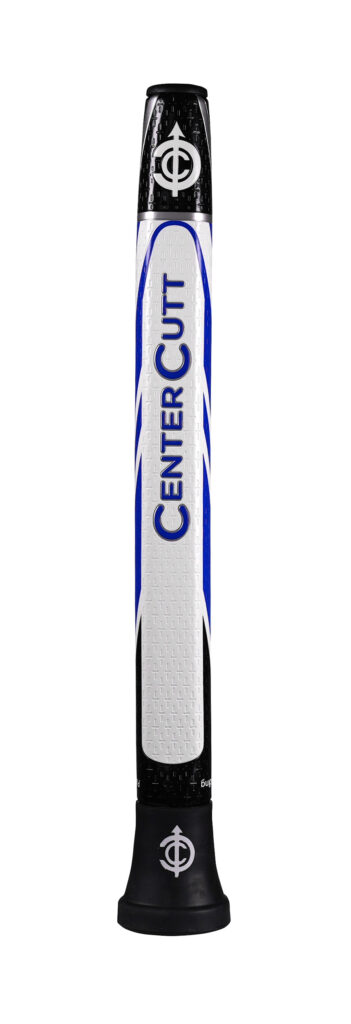
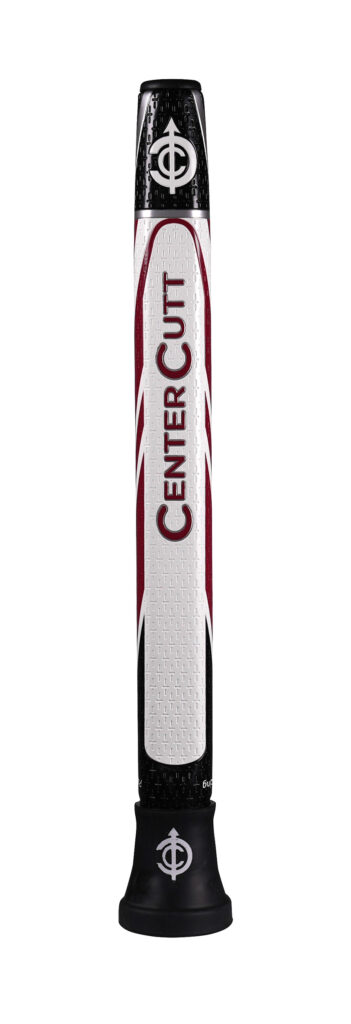
Why is a putting grip important?
Establishing Stability for Accuracy:
The putter grip forms the fundamental link between a golfer’s hands and the putter. Its material, size, shape, and texture all contribute to the golfer’s feel and touch during the stroke. By selecting a grip that suits your hand size and shape, combined with the appropriate texture, you establish a stable foundation for consistent and controlled putting strokes. This synergy offers the necessary stability for executing accurate putts, resulting in lower scores and improved performance on the greens.
Enhancing Sensory Perception and Feedback:
Beyond providing stability, a quality putter grip enriches the golfer’s sensory experience by transmitting essential feedback from the clubface to their hands. The grip’s material plays a crucial role in delivering this information. A soft and responsive grip can relay subtle vibrations and feedback, allowing golfers to make necessary adjustments for better control and increased confidence on every putt. In addition, the design and pattern of the grip contribute to the golfer’s perception, enabling them to become acutely aware of subtle nuances in their strokes. This heightened sensitivity enhances their ability to read the greens, make precise judgments, and roll the ball smoothly towards the target.

Combatting Tension and Fostering Consistency:
Tension is a golfer’s worst enemy when it comes to executing a smooth and fluid putting stroke. A well-designed putter grip, tailored to individual preferences, can alleviate tension and promote a relaxed grip, thereby fostering consistency and confidence on the greens. By reducing tension and encouraging a natural grip pressure, golfers are more likely to avoid jerky movements and unwanted manipulations during their stroke. With a relaxed grip, golfers can maintain a consistent tempo and rhythm, resulting in a smoother and more accurate putting motion. The ability to trust the grip to counterbalance tension allows golfers to execute putts with greater ease and finesse, improving their overall putting performance.
Customization for Personal Preference:
One of the most alluring aspects of a putter grip lies in its abundance of customization options, catering to individual preferences. The market offers an extensive selection of grips with different sizes, shapes, materials, and textures. This variety empowers golfers to experiment and find the grip that harmonizes best with their unique hand size, grip style, and putting stroke characteristics. The opportunity to discover a personalized grip instills confidence, promotes a sense of ownership, and encourages golfers to take control of their putting strokes. Customization elevates the player’s connection to their putter, making them feel more comfortable, confident, and ultimately leading to improved performance on the greens.
Evolution and Innovation:
Innovation is a driving force in the world of golf, and the putter grip is no exception. With advancements in materials, manufacturing techniques, and design concepts, today’s putter grips offer unprecedented levels of performance, comfort, and customization. From oversized grips to counterbalanced grips to adjustable grips, golfers have access to a wealth of options that cater to their specific preferences and playing styles. As technology continues to evolve, the putter grip remains at the forefront of innovation, pushing the boundaries of what’s possible and redefining the art and science of putting.
In conclusion, while often overshadowed by other aspects of the game, the putter grip plays a pivotal role in a golfer’s success on the green. From establishing stability and accuracy through a solid foundation to enhancing sensory perception and providing essential feedback, its influence cannot be underestimated. Moreover, by combating tension and promoting consistency, a well-chosen putter grip positively impacts a golfer’s confidence and overall performance. With the exciting range of customization options available, every golfer has the opportunity to find a grip that enhances their putting game and maximizes their potential on the greens. So, next time you step onto the putting surface, remember the hidden power of a putter grip—embrace its enigmatic influence and watch your golfing prowess soar to new heights.
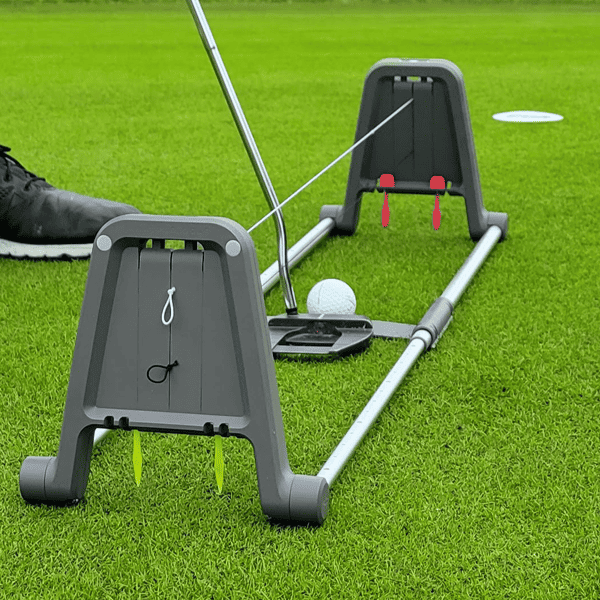
Putter Trainer we like
The PUR Truth Trainer main feature lies in its immediate and accurate feedback system. The inclusion of gates and targets provides clear indications of the trajectory and accuracy of your putts. This real-time feedback is invaluable for senior golfers looking to correct mistakes promptly and make incremental improvements with each practice session.
Apply the coupon code on the PUR website when you’re in the cart.
Most golf shops and retailers offer regripping services. They typically charge on a per club basis, with the majority charging less than $5.00 per club.
How to Replace Your Golf Club Grips: Do It Yourself.
Replacing golf grips is an essential maintenance task for golfers to ensure optimal performance and comfort during play. While it might seem daunting at first, the process is relatively straightforward and can be completed with the right tools and a bit of patience. Below is a comprehensive guide on how to replace your golf grips, along with some tips to make the process smoother:
- Gather Your Materials:
Before you begin, make sure you have all the necessary materials and tools. You’ll need:
- New golf grips
- Double-sided grip tape
- Solvent (such as grip solvent or mineral spirits)
- Golf grip installation tool (optional, but recommended)
- Hook blade or utility knife
- Towel or rag
- Remove the Old Grips:
Start by removing the old grips from your clubs. If they’re still in good condition and you plan to reuse them, carefully peel them off using a hook blade or utility knife. Be cautious not to damage the shaft or grip tape underneath. If the grips are worn out or you prefer new ones, you can simply cut them off with a knife. - Clean the Shaft:
Once the old grips are removed, take a moment to clean the shafts of your clubs. Use a towel or rag dampened with solvent to wipe away any remaining adhesive or residue from the grip tape. This will ensure a clean surface for the new grips to adhere to. - Apply Grip Tape:
Next, it’s time to apply double-sided grip tape to the shaft. Start at the butt end of the club and wrap the tape around the shaft in a spiral pattern, overlapping each layer slightly as you go. Make sure to cover the entire area where the grip will be installed, extending slightly beyond the length of the grip. - Prepare the Grips:
Before installing the new grips, it’s a good idea to prepare them for installation. If they come with a protective plastic wrapping, remove it carefully. Some grips may also have alignment markings or logos that you’ll want to position correctly when installing. - Apply Solvent:
To make it easier to slide the grips onto the shafts, apply a small amount of solvent to the inside of each grip and the exposed grip tape on the club. Grip solvent is specifically designed for this purpose, but if you don’t have any on hand, mineral spirits can also work. - Install the Grips:
With the grips and shafts prepared, it’s time to install the new grips. Position the grip at the butt end of the club and carefully slide it onto the shaft, twisting slightly as you go to ensure even coverage of the grip tape. Use a grip installation tool if you have one to help push the grip onto the shaft evenly. Once the grip is in place, make any final adjustments to ensure it’s aligned properly. - Let Them Set:
After installing the new grips, give them some time to set and dry completely. This typically takes a few hours, but it’s best to let them sit overnight if possible. Avoid using the clubs until the grips are fully dry to ensure a secure bond between the grip tape and the shaft. - Trim Excess Tape:
Once the grips are dry, use a knife or scissors to trim any excess grip tape protruding from the ends of the grips. Be careful not to cut too close to the grip, as you don’t want to risk damaging the bond between the grip and the shaft. - Test and Adjust:
Before heading out onto the course, take some time to test the new grips and make any necessary adjustments. Grip them as you would during a round of golf and ensure they feel comfortable and secure in your hands. If needed, you can add more solvent to the grips to adjust their positioning or firmness.
Replacing your golf grips is a simple yet important task that can have a significant impact on your performance and enjoyment of the game. By following these steps and taking your time to do the job properly, you can ensure that your clubs are equipped with grips that provide the comfort, control, and confidence you need to play your best on the course.

Putting Drills & Tips Golf Lessons For The Flat Stick by Golf Distillery
In this section of the site, we’ll focus on what I truly believe is the most important club in the bag… the putter.
The putting tips and lessons below cover good putting fundamentals such as alignment and stance, the putting stroke, the putting grip, reading greens and distance control.
I’ve also included some putting drills and games so that you can make the most of your time when you practice putting.

How Many Putts Do You Take?
I don’t think most golfers appreciate just how many shots they are throwing away with their putter. If you want to better your scores on the golf course and lower your handicap as quickly as possible – improve your putting.
- Count the number of putts you take per round over an average of 3 rounds.
- If you’re taking more than 36 putts per round, you’re wasting shots on the golf course.
- If, like many higher handicappers, you’re taking 40+ putts per round, it’s like taking half a dozen air shots on the first tee. You wouldn’t do that too often before doing something about it!
- There’s no reason why any level of golfer can’t become a very good putter with proper instruction and a bit of practice.
- Unlike the physically demanding full swing, putting is a skill that can be mastered regardless of age and physical strength.
Lag Putting Drill
2-Putt everything from anywhere on the green
The distance from the hole for your first putt is always determined by the quality of your approach.
Sure, you will sometimes be able to put your ball within 10 feet for a real chance at birdie. But more often than not you will be faced with putt distances where the odds are against you. Instead of going for it every time it may be best to take your medicine and protect your par from a three-putt bogey rather than going for the one-putt birdie.

Follow these steps to practice your lag putting:
- If at all possible position yourself far away from three different holes on the putting green and drop three balls in front of you.
- Strike your first ball towards one of the holes while trying to see the ball coming to rest within three feet of the hole. This circle around the hole is the target, not the hole itself so the pace of the putt is more important than the precise line.
- Strike your second ball towards a second hole with the same objective of seeing the ball come to rest close to the hole.
- Finally, strike your third ball towards the last hole, again with the same objective.
- Go to your first ball and try to hole it in what would be a two-putt par. Likewise, try to convert your second and third ball and see how many three-putts you were able to save.
Target the Very Center of the Cup Drill
Take dead aim… at the very center of the hole
Harvey Penick used to say that golfers should take dead aim. While he may have been talking about golf shots using longer clubs and full swings that saying can certainly also apply to putting.
Indeed, rather than aiming at the general direction of the hole it can be quite useful to aim at the very center of the hole. That way, missing that very precise target can still result in holed putts.

Follow these steps in order to make a precise target in the middle of the hole:
- Plant a tee straight onto the inside of a hole on the practice green.
- Push it through the ground sufficiently so that there is enough room for the ball to fall in the hole should it strike it.
- Practice putting from in front of the tee while trying to see the ball hitting the tee before falling into the hole.
Alternative
If you want to make sure not to damage the inside of the cup as prescribed or if there is a hard plastic liner preventing you from doing so there is an easy alternative.
Indeed, practice your putting as you normally would on the putting green but instead of aiming at the holes simply aim at a tee (or tees) that you previously inserted into the ground. Imagine that you must hit the tee in order for the putt to count as made. Any putt that missed the tee can be deemed not to fall in.
The Smaller the Target the Greater the Margin of Error
Performing this putting drill will train you to focus and aim at a very specific target.
This is in contrast to aiming at the general direction of the hole. Picking a smaller target will get you to really apply yourself to make sure you hit a great putt and that the line you picked was the correct one.
And best of all, when you take that focus onto the golf course and when you miss that small target your putts may still fall into the hole nonetheless.
- Mental Strategies to Help Senior Golfers Play Better
 ⛳️ Golf is more than a swing—it’s a mental game. For senior golfers, sharpening your focus, building confidence, and staying calm under pressure can make all the difference.
⛳️ Golf is more than a swing—it’s a mental game. For senior golfers, sharpening your focus, building confidence, and staying calm under pressure can make all the difference. - Golf Spectator Etiquette: How to Enjoy the Game Without Distracting the Pros (With Lessons from the 2025 Ryder Cup)
 Learn golf spectator etiquette with senior-friendly tips. Lessons from the 2025 Ryder Cup show why respect keeps the game enjoyable.
Learn golf spectator etiquette with senior-friendly tips. Lessons from the 2025 Ryder Cup show why respect keeps the game enjoyable. - Forward Tees: The Distinction of Being a Super Senior
 Experiencing something peculiar and delightful has been my reality in recent years. It’s been quite a transformation for me—I’ve become what they call a “super senior” golfer. Now, let me clarify,
Experiencing something peculiar and delightful has been my reality in recent years. It’s been quite a transformation for me—I’ve become what they call a “super senior” golfer. Now, let me clarify, - Best Golf Tips for Senior Golfers – Expanded Guide
 Whether you’ve been playing golf for decades or have only recently taken up the sport, being a senior golfer comes with its own set of challenges and opportunities.
Whether you’ve been playing golf for decades or have only recently taken up the sport, being a senior golfer comes with its own set of challenges and opportunities. - Effective Ways to Address Smoking on the Golf Course
 Smoking—especially cigar smoking—on the golf course is a long-standing tradition for some players, but it can also create tension within a group when not everyone enjoys or tolerates smoke. Addressing smokers in your group the right way requires a balance of respect, tact, and awareness of both etiquette and course policies. Smoking on the Golf… Read more: Effective Ways to Address Smoking on the Golf Course
Smoking—especially cigar smoking—on the golf course is a long-standing tradition for some players, but it can also create tension within a group when not everyone enjoys or tolerates smoke. Addressing smokers in your group the right way requires a balance of respect, tact, and awareness of both etiquette and course policies. Smoking on the Golf… Read more: Effective Ways to Address Smoking on the Golf Course

